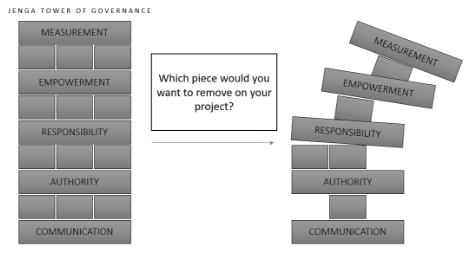

I played Jenga a lot as a kid. My sister and I would camp out on the hardwood living room floor (the carpet introduced too many variables!). We’d play round after round, taking turns re-stacking the blocks, carefully packing them tightly into the clear plastic case so they’d be as level as possible for the start of each game.
As cliché as it may be, the analogy of Jenga is applicable when we’re assessing a challenging situation – which essential building blocks are missing?
At first glance, the tasks that our clients are looking to accomplish vary widely, such as:
These tasks can be challenging in the best of situations, where staff has the time, core competencies, exposure, and support to learn the skills necessary to be successful.
But those best-case situations are rarely available, and this is why true success builds on governance.
Governance is the way to ensure that an organization’s goals meet their strategic requirements. This requires deeper investigation into policies and procedures, communication and cross-team collaboration, and the alignment of these efforts with organizational goals. For transformational projects to be truly successful and sustainable, the foundations for governance must all be in place.
Where do we start when we’re talking about the foundations of governance? We found some similarities between our approach and this article, and we found some differences, too. Over the next several posts, we’ll dig in to warning signs we look for when assessing three of the foundations of governance in any project.
Meanwhile, we’d love to hear where you are struggling with foundations of governance – email us!
prominencesales@prominenceadvisors.com